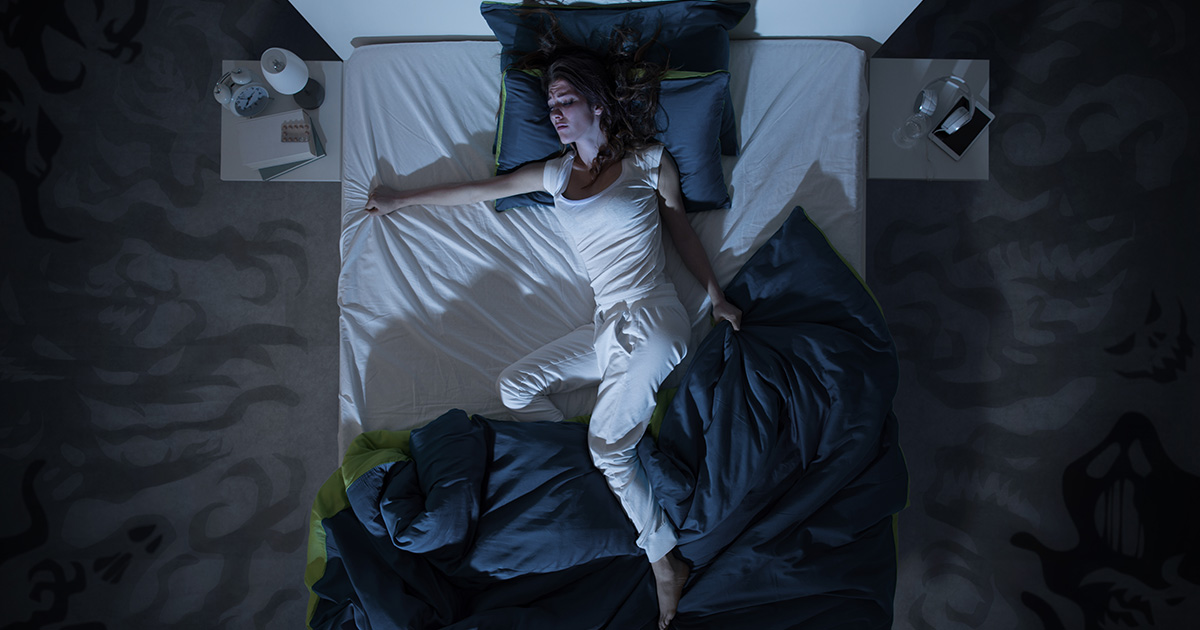The Woolcock Institute of Medical Research

A heated relationship
Sleep Talks, a chance to hear from leading researchers about sleep, its individual and societal health and how essential it is, begins at the Woolcock and Macquarie University on Thursday 25 July.
The series of talks will be delivered monthly on the fourth Thursday of the month. They’re designed to provide a university-wide forum with engaging and informative discussion on topics that have broad interest to academic and lay audiences (with some knowledge of the topic). All presenters are either Macquarie University academics, honorary fellows or affiliated with the Woolcock Institute of Medical Research.
They follow in the tradition of the Woolcock’s seminar series, which was instigated by founder Professor Ann Woolcock as a way of promoting communication and collaboration between research groups.
A prime mover behind this latest initiative is the Woolcock’s resident specialist in sleep and thermal physiology, Associate Professor Christopher Gordon, who recently spoke to researchers about why “being hot makes you slow”.
SLEEP’S CORE ISSUES
Associate Professor Gordon is a research leader in our Sleep and Circadian Research group with expertise in insomnia and chronobiology so it may seem like an unusual topic for him, but he explains that core body temperature, skin temperature, sleep and vigilance are all intricately intertwined.
Thermal physiology has traditionally been a very narrow field of research with people working in areas such as military applications associated with environmental ergonomics and in clinical research on fever and anaesthesia. The interest in temperature regulation for sleep researchers lies in the growing understanding of the interaction between thermal regulation, behaviours, sleep and vigilance.
“The universe has this huge temperature range that biological matter can't survive in. The temperature on Earth is in a sweet spot where biology can exist and survive – roughly -25°C up to about 50°C,” Associate Professor Gordon says in his explainer. “Animals can live and survive in environments ranging from zero to 45°C. Humans mostly modify the environment to live comfortably and keep their core temperature in a narrow range of about 36.2°C to 37.6°C. This is the thermoneutral range.”
“The two-compartment model of thermoregulation in humans is where the shell (our skin) changes with the ambient temperature to maintain core temperature in the narrow range. It typically only factors in the body’s defensive physiology (sweating, shivering, changes in blood flow) not behavioural factors (like clothing, artificial heating) to maintain core temperature. Overlaying this is the thermoneutral zone where core temperature is stable, but physiological mechanisms like sweating, shivering and changes in blood flow are activated to maintain the core body temperature.
“The thermoneutral zone is critically important when it comes to sleep because of what happens at the onset of sleep and maintaining sleep. We’re still learning about the neuronal networks that govern these functions but we do know that they are responsible for the temperature changes we experience before we sleep.”
Want to stay up to date with our research on sleep and respiratory conditions?
Sign up to our monthly newsletter
COLD HANDS …
“The biggest change over the past 15 years is the idea that peripheral thermosensitivity (what we’re feeling in our fingers, toes, face and ears) has a greater role to play than what was first thought.”
Associate Professor Gordon first noticed when he shook hands with people with insomnia coming into the sleep laboratory for studies. Not all of them, but a large percentage, had cold hands and when he commented on it they said they always felt cold.
“That aligns with the hyperarousal model of insomnia where people with insomnia have increased sympathetic activation and have cool peripheries. There is a thermal gradient which directly relates to sleep onset and I became interested in skin temperature across the body.”
He started by reviewing a number of studies investigating the difference between skin temperature in peripheral regions and other parts of the body which showed it was functionally linked to sleep onset. You fall asleep when your core temperature decreases with heat liberated through the peripheral regions which corresponds to an increase in peripheral skin temperature. Other studies showed increased peripheral skin temperature resulted in impaired alertness and reaction times and this was not associated with how sleepy a person was. Being hot was slowing people’s reaction times.
WHAT LIES BENEATH
So, what's going on? Is there neuronal circuitry common to sleep, vigilance and temperature pathways in the brain? What consequences may this have for people who experience insomnia, obstructive sleep apnea (OSA), for long-distance drivers and shift workers? Are there ways to manipulate sleep and performance through skin temperature manipulations?
They’re questions that provoke lively discussion and valuable inputs when posed in a room full of researchers and academics providing food for thought and, maybe, for the next area of research.
Find out more
- Register for Sleep Talks events
- Sleep services at the Woolcock Clinic
- Our Sleep and Circadian Research Group










